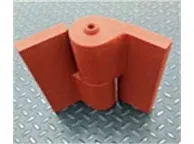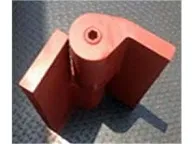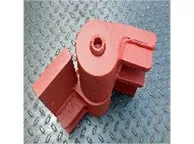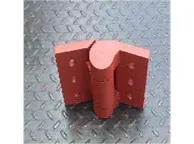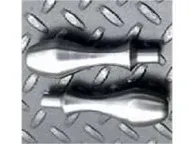Hinges are an integral part of any door as they serve as its anchor. It enables the door movement up to certain angles depending on if the door opens outside or inside. So, they work like joints of the door. The hinges can be made of different materials. They are broadly classified into two types- mortise hinges and non-mortise hinges. However, there are various types of hinges such as barrel, butt, pivot, heavy duty, and more, which can be mortise or non-mortise depending on their application and user preference. This post will help you understand the difference between mortise and non-mortise hinges on the basis of their definitions, basic structure, and applications.
Get Introduced to Mortise Hinges
Mortise hinges are the ones where the hinge leaves are designed to lie on the plate or mortised into the door frame or jamb. It is hidden with the door surface, and makes it look smooth and allows for a wider throw of the door when opening. They are fabricated from carbon steel or stainless steel (grades 316L or 304L). Half mortise or a full mortise hinges are available for your convenience. Full mortise hinges have been traditionally used for decades. Both leaves of these hinges lie on the door plate or the door. In half mortise hinges, only one hinge leaf is mounted on to the door frame, which is visible. The other leaf is fastened on the face of the door.
Doors which have mortise hinges do not require cuts into the steel to fit the hinge. These are easy to install and makes for a rigid mounting option as well. They have a non-handed design and hence can be mounted either on the left or the right.
Mortise hinges are suitable for heavy-traffic entrances and heavy-weight doors. Their application areas include heavy doors at industrial, military, dependable medical, and commercial facilities. 304 stainless steel hinges are available for corrosion resistant applications. 316L stainless steel has better corrosion resistant properties are excellent choice for highly corrosive and marine environments. Mortise and half mortise hinges manufactured in standard or heavy-duty styles.
- The needle bearings or bronze sleeve bearings ensure years of maintenance free service
- Maintenance free service for years of servic.
- Mortise or Half Mortise Hinges are available
- Non-removable pin for tamper resistant installations are available
- Our hinges are proudly Made in the U.S.A
Non-Mortise Hinges
These are surface mount hinges that can be welded or bolted to the outside of the door frame and the outside of the door They are fabricated from carbon steel or stainless steel grades 304L or 316L. They may or may not have mounting holes to fit in the screws. For instance, some heavy-duty pivot hinges or vault hinges are plain or weld-on (without holes) surface-mount hinges. These hinges are sturdy and hence suitable for extreme environments such as main gates, doors of production floors or flammable and hazardous chemical storage areas. Depending upon the application, non-mortise hinges are sturdy and are made of materials that make them resistant to moisture, corrosion, chemicals, and abrasive environments. These heavy-duty hinges are also suitable for doors heavy traffic. A few application areas of non-mortise hinges include military vehicles and bunkers, security doors, armored vehicles, electrical enclosures, prison doors, radiation shielding doors, and more. Non-mortise hinges are maintenance free and offer years of dependable service.
Are you looking for the right door hinges? Have you made a decision whether you want mortise hinges or non-mortise hinges? If yes, check the reliability of Kiesler Machine Inc. hinges. Kiesler Machine is a reliable manufacturer of superior-quality mortise and non-mortise hinges. The company provides these hinges in custom designs and specifications.







